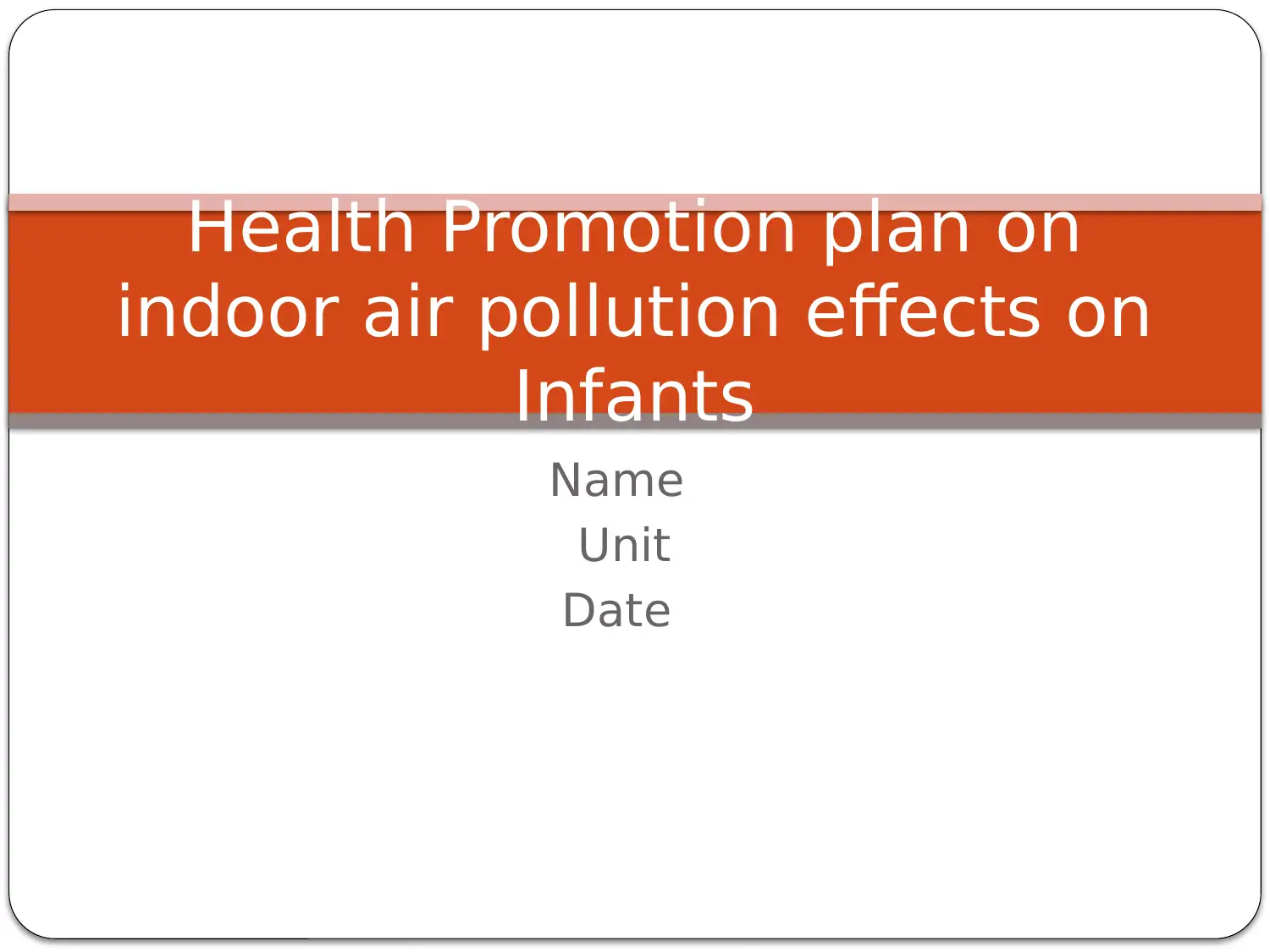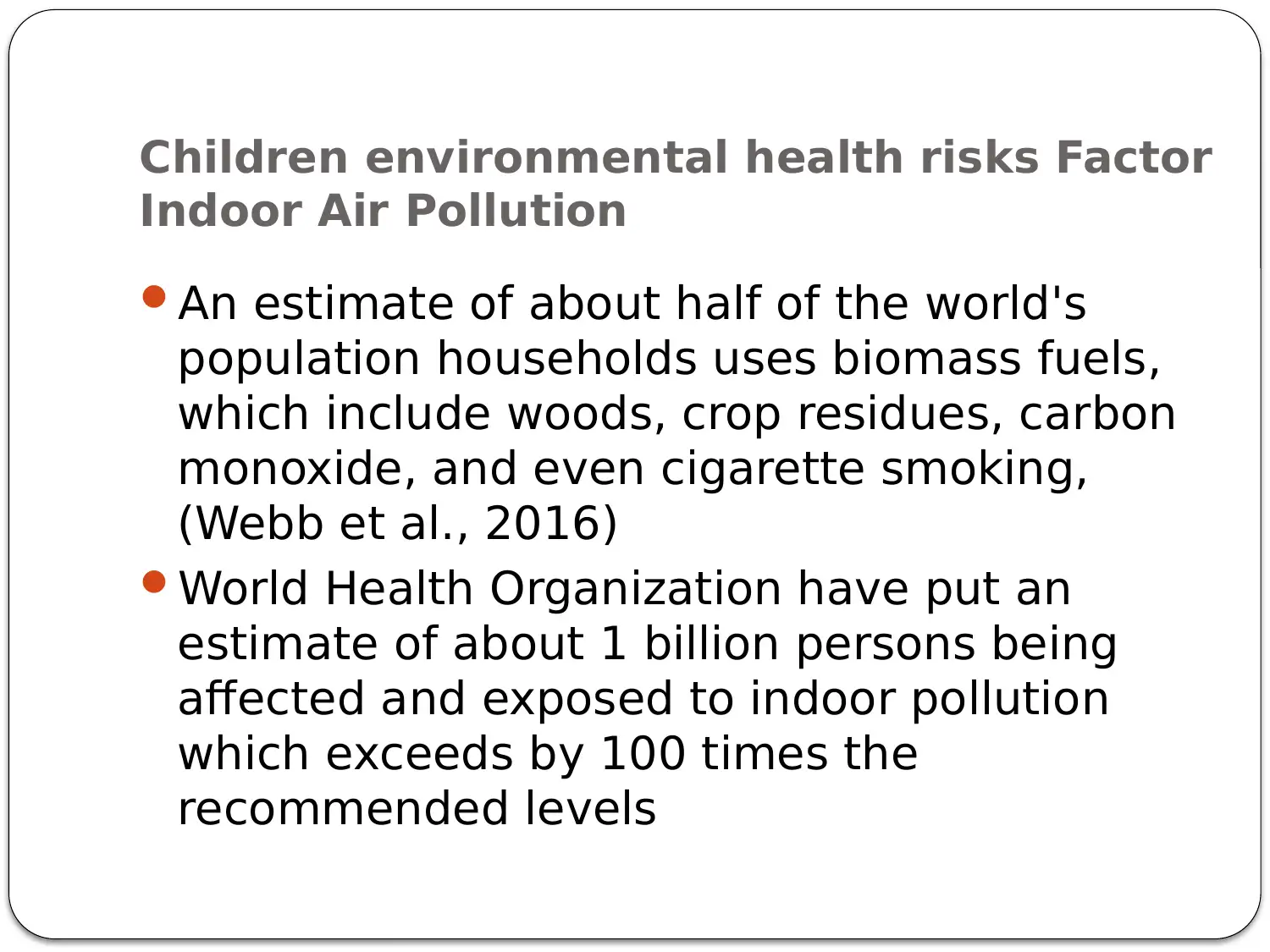Developing a Health Promotion Plan: Indoor Air Pollution and Infants
VerifiedAdded on 2023/04/20
|13
|816
|384
Report
AI Summary
This report presents a health promotion plan focused on mitigating the detrimental effects of indoor air pollution on infants. It begins by highlighting the vulnerability of infants to environmental hazards, particularly indoor air pollution from sources like biomass fuels and tobacco smoke. The plan utilizes the health belief model, emphasizing perceived severity, susceptibility, benefits, and barriers to guide interventions. The primary goal is to educate parents and caregivers on eliminating indoor pollution and cigarette smoke exposure, promoting healthier home environments. Strategies include healthy homes promotion, improving air quality through air filters, and establishing smoke-free homes. The report also provides a list of community and national resources for further assistance and information. This comprehensive plan aims to improve infant health by reducing exposure to indoor air pollutants.
1 out of 13














![[object Object]](/_next/static/media/star-bottom.7253800d.svg)